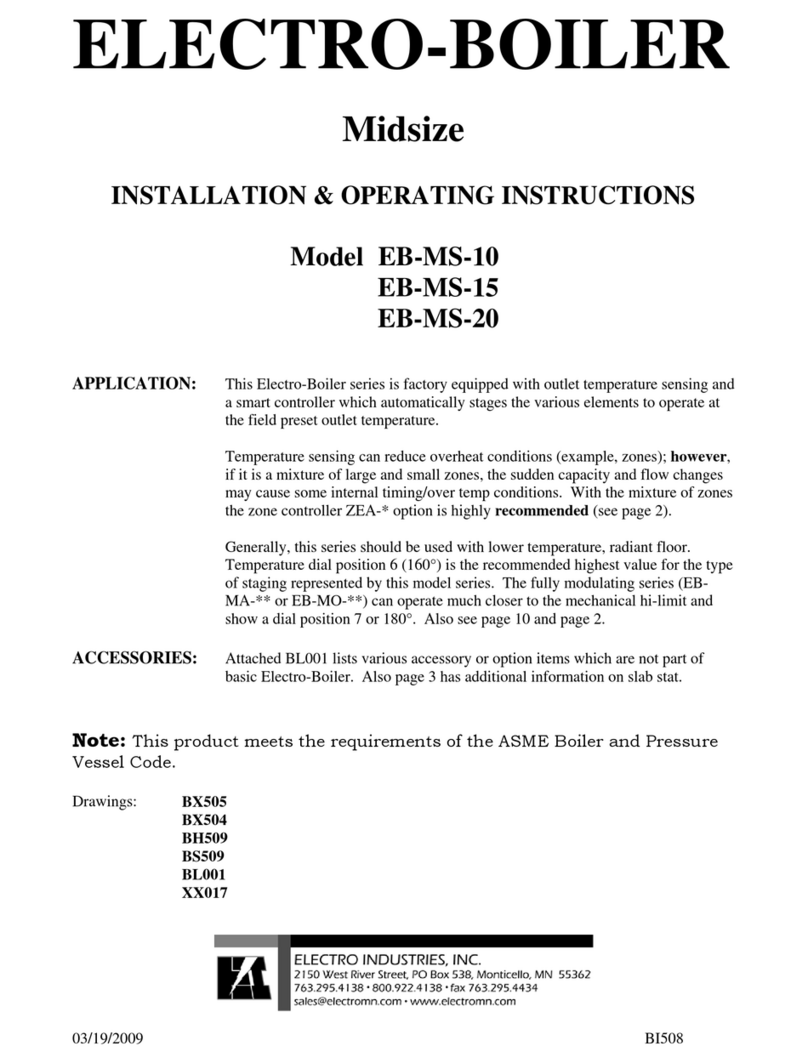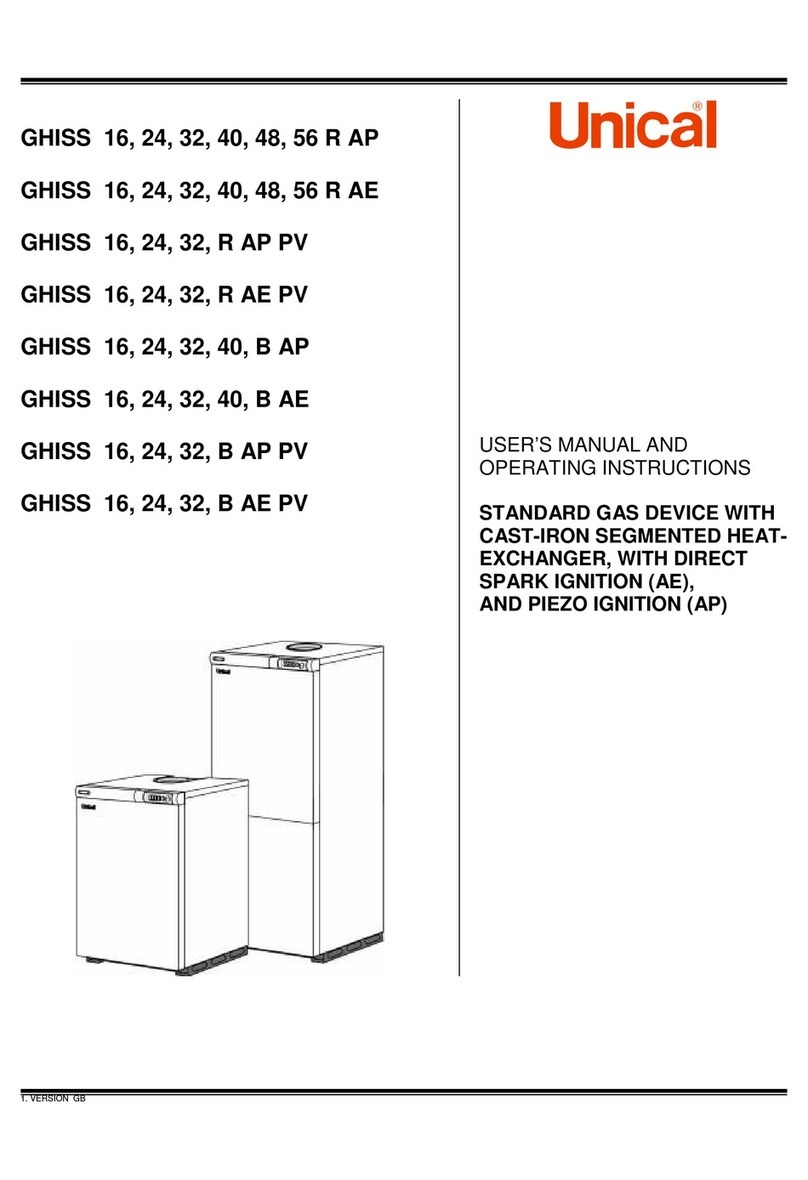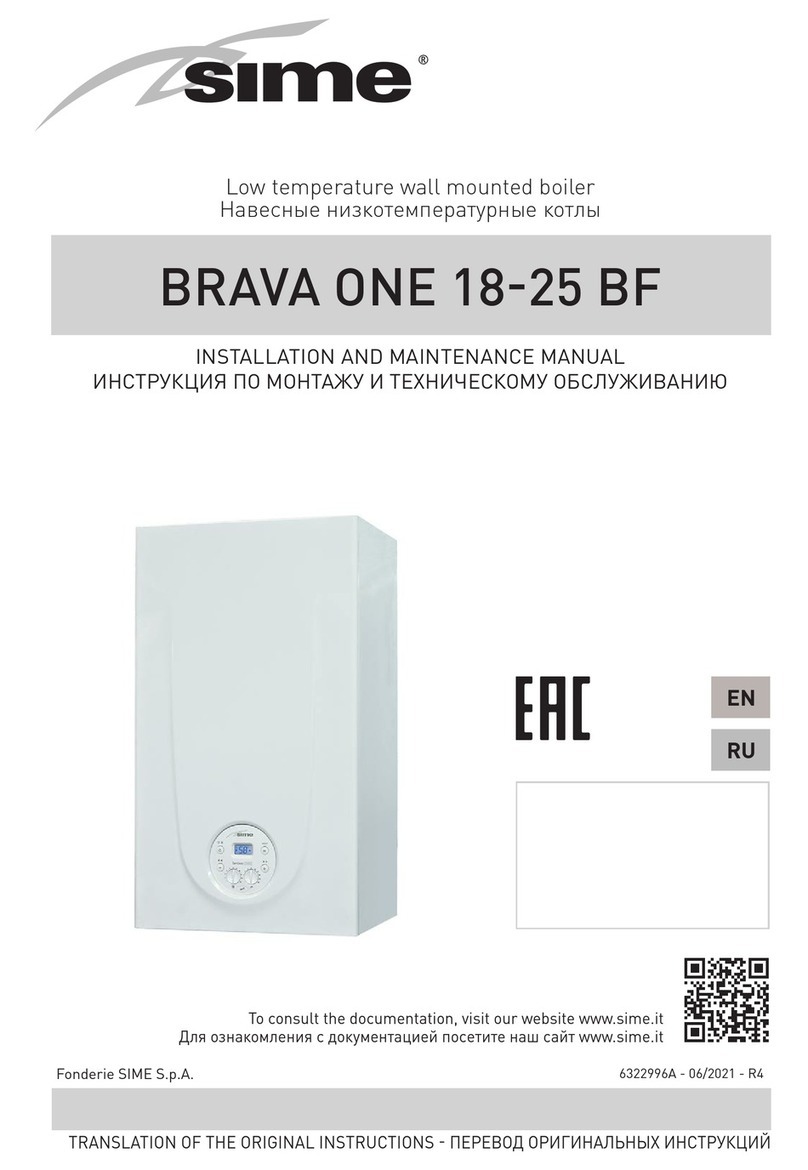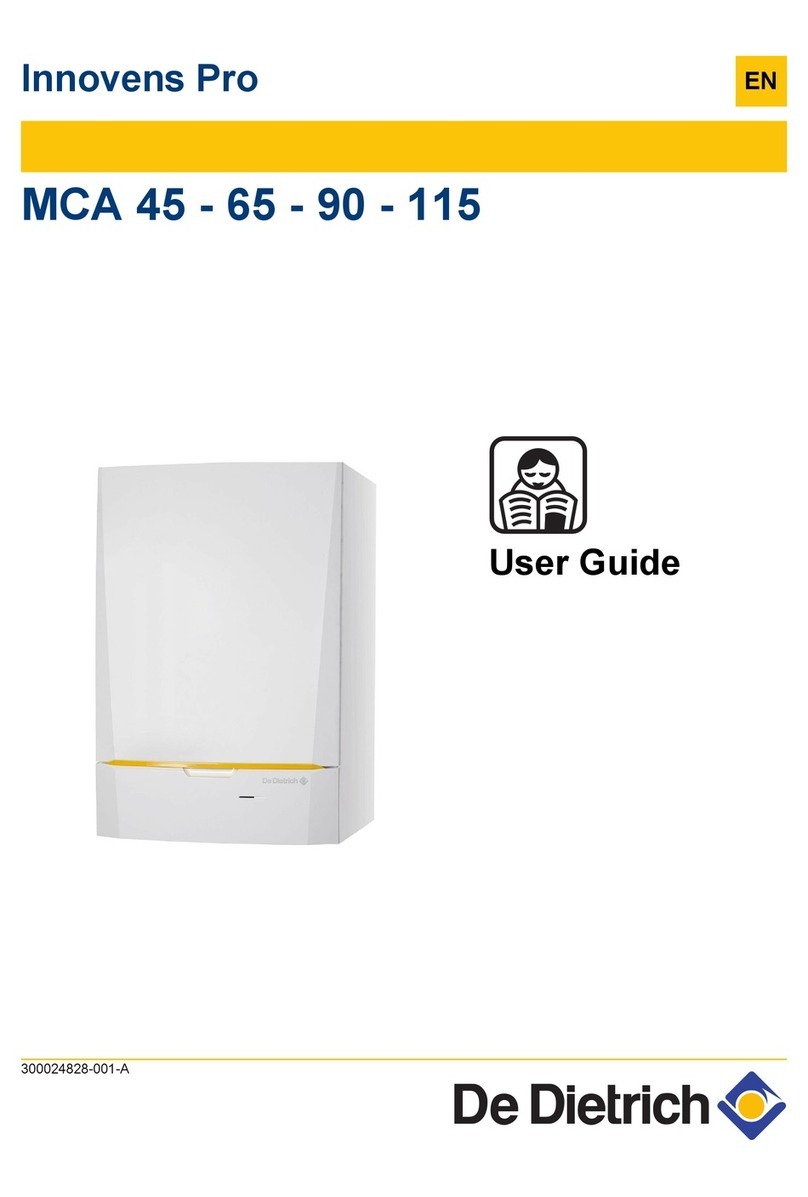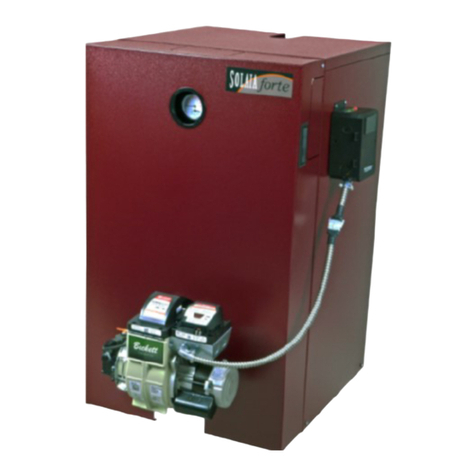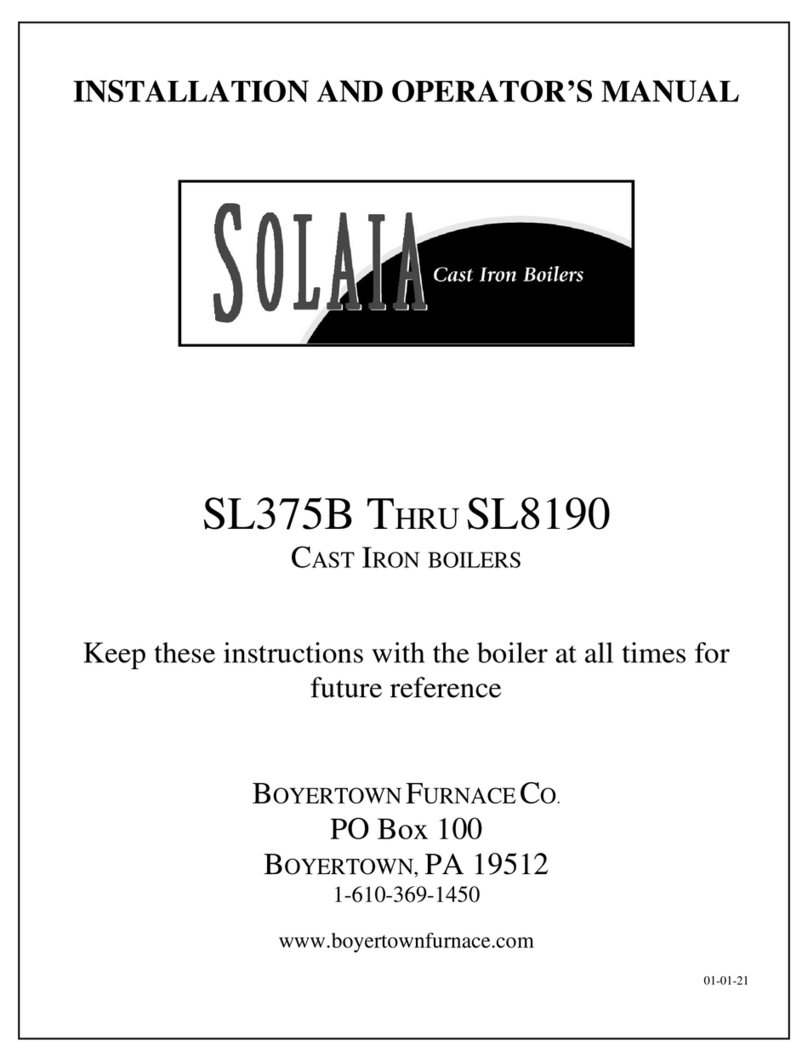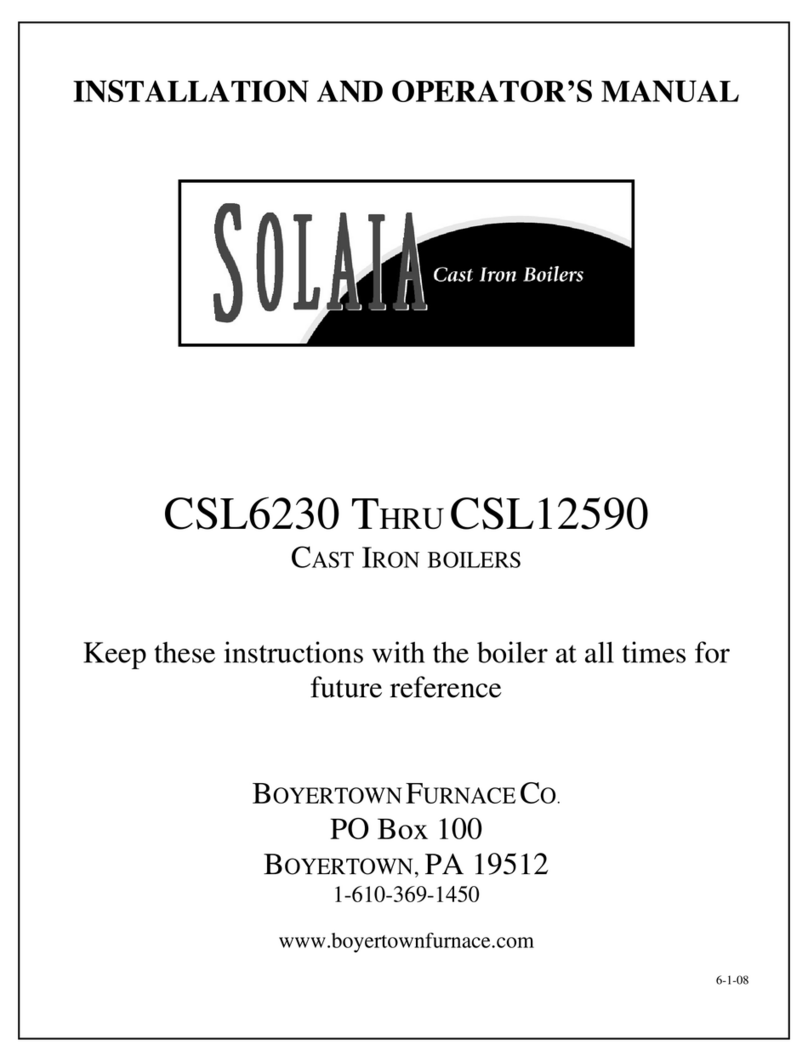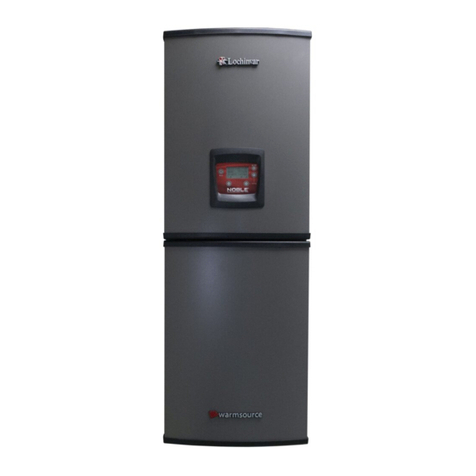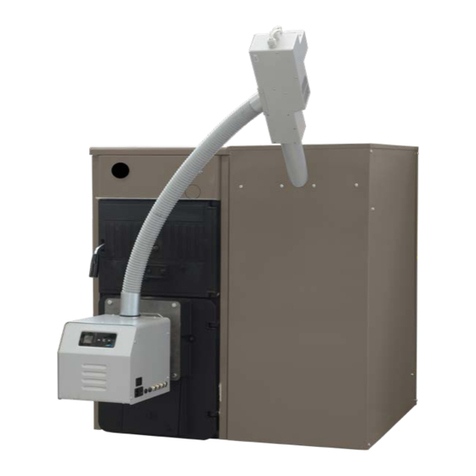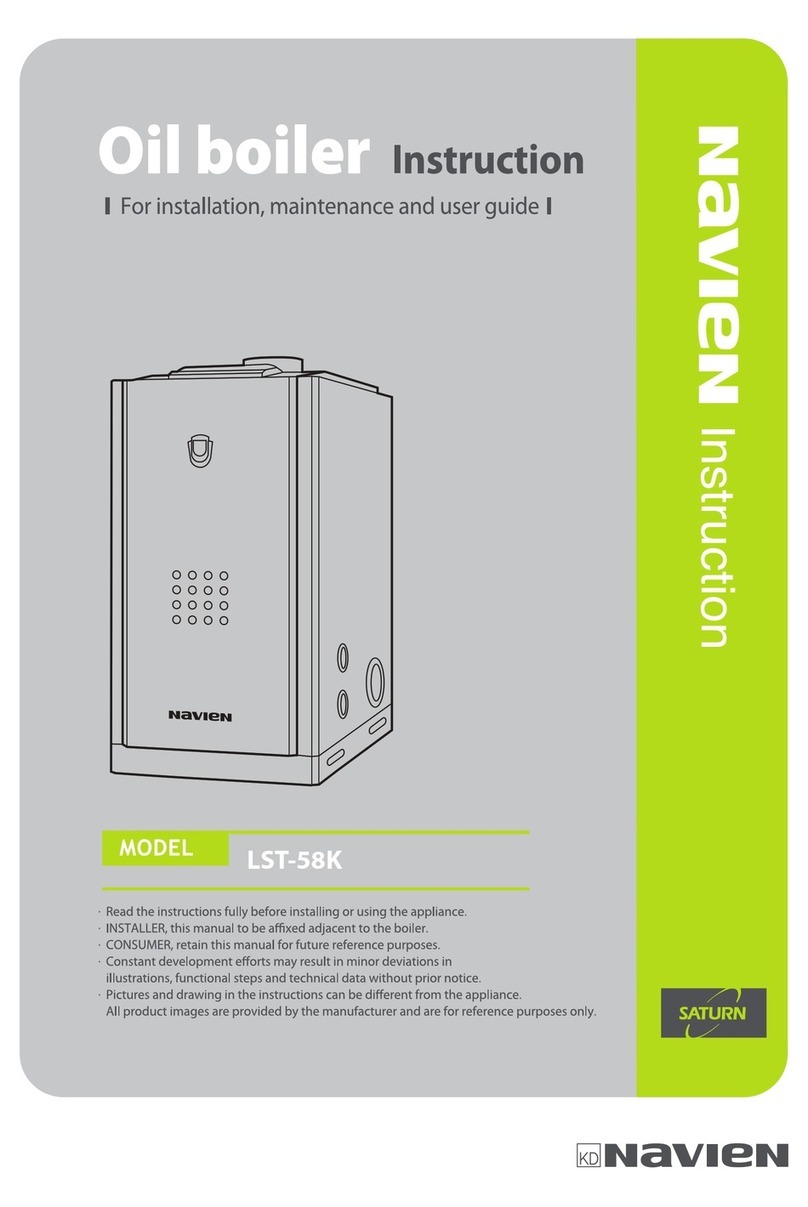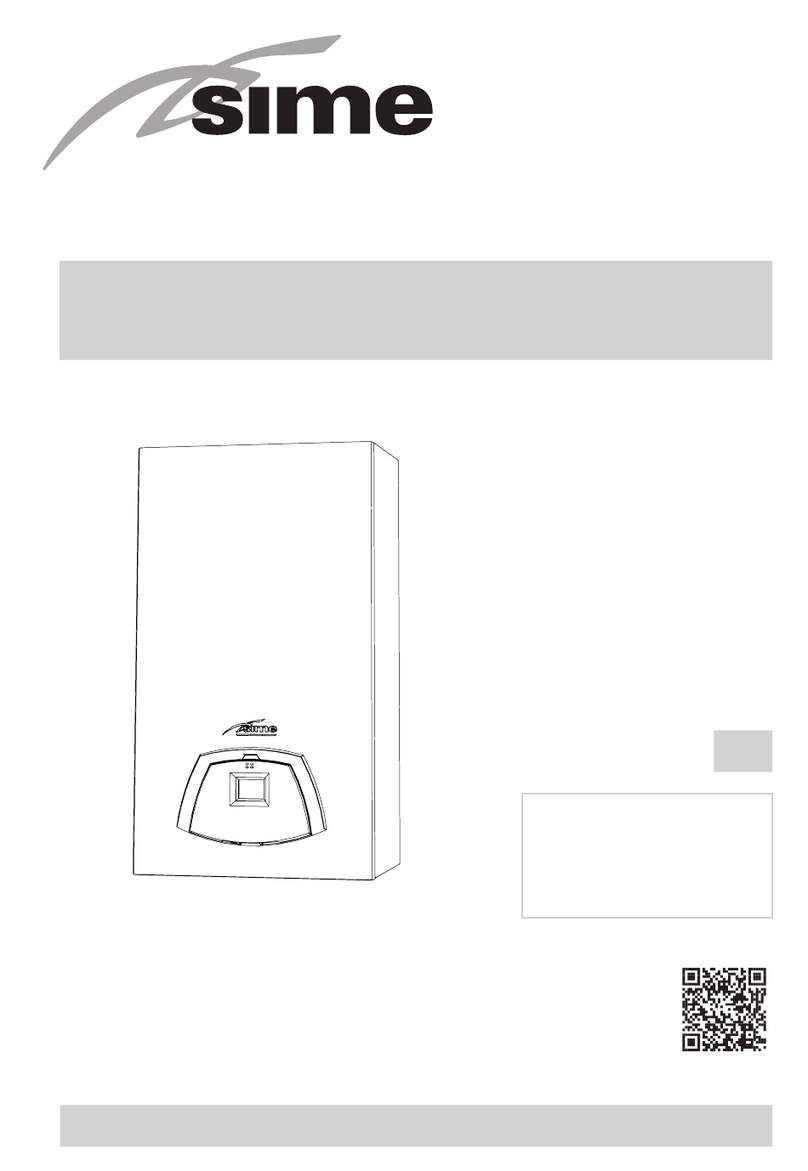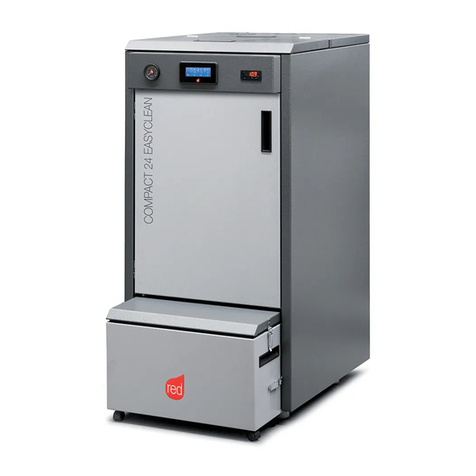
9
Prior to installation of the boiler, the chimney or venting system shall be examined by the installer and
determined to be in good condition. All joints of the chimney must be tightly sealed. The inside of the
chimney should be free of all obstruction, such as loose brick, broken pieces of tile, or corroded metal. If
chimney flues are divided or there are multiple flues within one chimney, make sure there are no openings
in the partition separating the divided or individual flues. When a new appliance is connected to an existing
chimney, that chimney shall be brought up to current requirements. Chimneys which are relined shall be
done so with an approved liner that will resist corrosion, softening, or cracking from the flue gasses.
All chimney clean-out doors and flue connections must fit tightly so they will seal to avoid air infiltration.
The inside area of the chimney liner should equal, at a minimum, the area of the vent pipe exiting the
furnace. If more than one appliance is installed, the area of both appliances shall be used in determining the
required inside area of the chimney.
The flue gas exit of a chimney shall be at least 3 feet above the highest point where it passes through the
roof of a building and at least 2 feet higher than any portion of a building within 10 feet of such chimney.
The chimney height will also be determined by the height of the surrounding trees, buildings and terrain.
When chimney downdraft conditions cause faulty operation that creates a hazard, corrective steps must be
taken.
When altering the surrounding obstructions is not possible, a chimney cap can be constructed on the top of
the chimney to avoid downdrafts. The chimney cap should be pyramid shaped on the top with a perfectly
flat surface immediately above the chimney outlet. The hood should be attached by four (4) iron supports.
The four iron supports should be equal in height to the width of the chimney opening. Four plates, flaring
down, can be added to help insure that the wind will pass straight over the chimney outlet.
Chimney Relining
A tile lined masonry chimney serving the boiler should comply with applicable building codes such as
NFPA-211. An additional listed lining may be required to reduce transient low draft during startup and acid
water condensation during cyclic operation. This is particularly true for high mass masonry chimneys
serving furnaces of higher efficiency. For masonry chimneys, local experience can indicate how well
construction has withstood the lower temperatures produced by higher efficiency furnaces.
Evidence of potential or existing chimney damage should be determined by visual inspection of the chimney
and liner. Exterior indicators such as missing or loose mortar/bricks, white deposits on the brick or water
stains on the interior building walls should be investigated further. The operational flue temperatures for
boilers range from 350ºF to 450ºF at the outlet of the boiler. These temperatures are further reduced before
reaching the chimney due to heat loss through the vent connector and dilution from the draft regulator. The
resulting flue gas temperatures may become low enough to form condensation on the chimney liner walls.
To prevent condensation, it is necessary that the internal chimney wall temperature always be kept above the
dew point of the flue gasses. If the chimney is a masonry type, it may have to be lined with a flue liner, if
the temperature loss is too great for the boiler. A liner will act as an insulator and reduce the flue gas
temperature loss. Insulation may be added around the liner for further temperature stability.
Chimney Connector
The chimney connector pipe between the boiler and chimney shall be of equal diameter as the flue outlet of
the boiler. Refer to boiler specifications in this manual for proper size flue pipe for your model boiler. Any
reduction in size required for the chimney must be made at the chimney connector. The vent connector pipe
must be made of 24 gauge (or thicker) corrosion-resistant steel. The vent connector pipe should be as short
as possible and installed so that it has a continuous rise from the boiler to the chimney. Long horizontal vent
runs can result in the possibility of condensation in the flue pipe or the chimney. All horizontal runs of vent
connector pipe should be pitched upward a minimum of 1/4 inch per foot of run. The horizontal length of



























